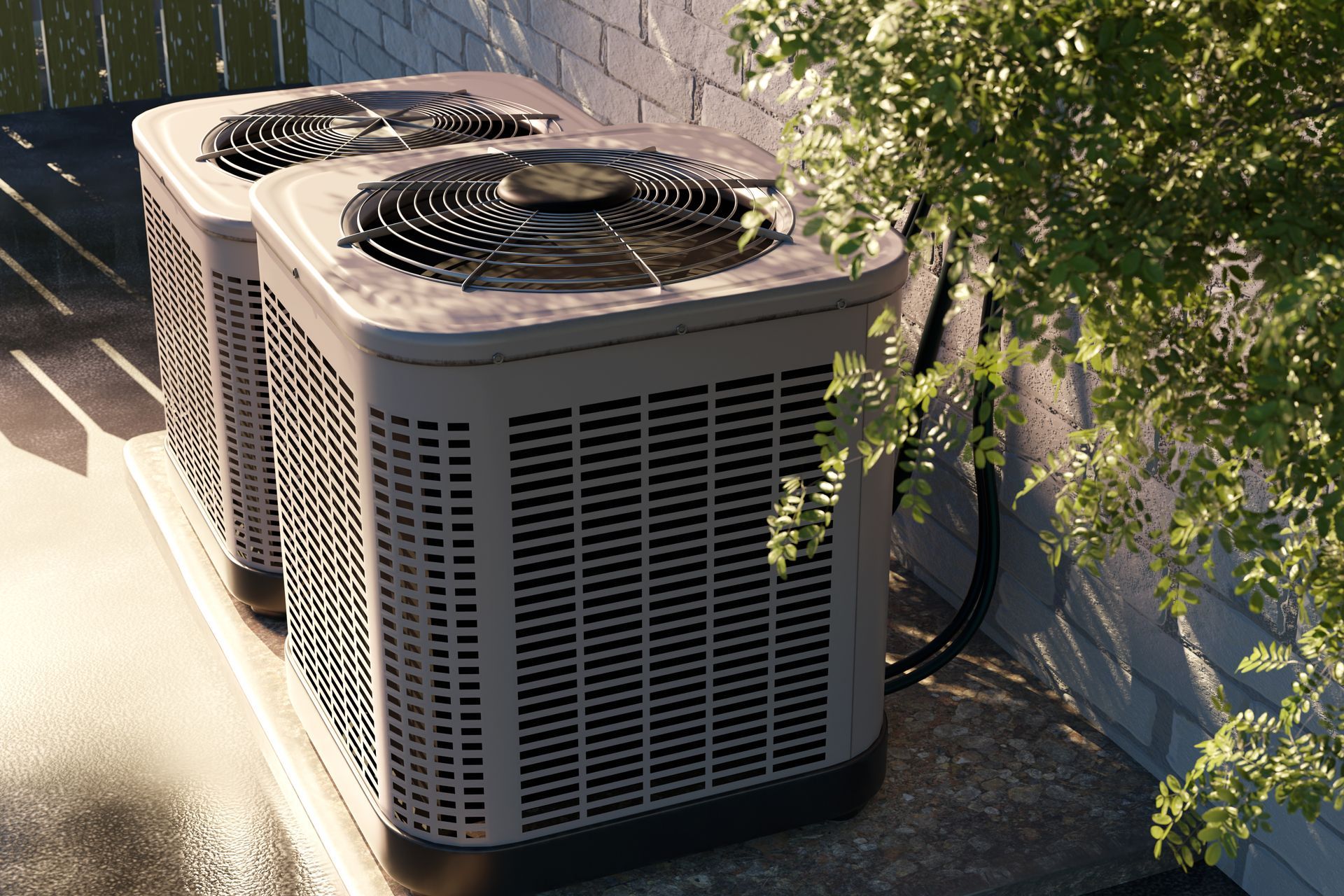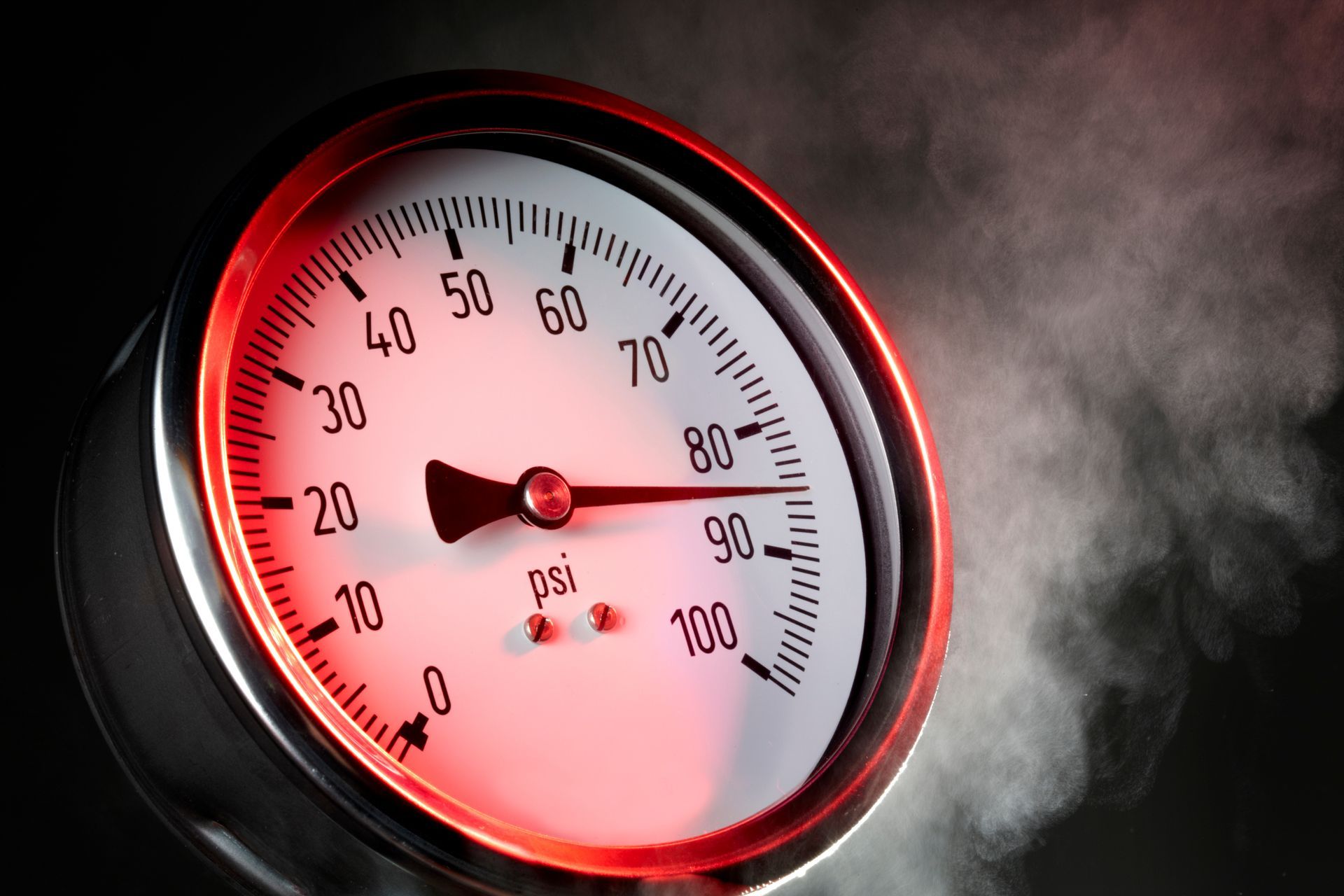Can Thermal Expansion Damage Your Home's Plumbing?

Water expands as it heats, and in a water heater tank, the only place it can expand into is the cold water inlet. In homes with backflow prevention, that path is blocked, and this expansion generates pressure that has no escape. Even a small amount of expansion can strain your water heater and pipes.
One of the simplest parts plumbers install to protect water heaters and pipes is a thermal expansion tank. These tanks have the capacity to absorb the extra volume and relieve pressure in the tank without putting the rest of your plumbing at risk.
What a Thermal Expansion Tank Actually Does
A thermal expansion tank provides a designated place for water that has expanded after being heated to flow. It’s a small, pressurized tank with an internal air bladder that compresses slightly as water fills the chamber. This buffer absorbs the increased volume and keeps pressure levels inside your plumbing system stable.
Expansion tanks are typically connected to the cold water line feeding into your water heater. They activate passively, requiring no user input or maintenance aside from occasional pressure checks. Most residential models are only a few gallons in size and are designed to last for many years when properly installed.
Why Expansion Tanks Are Especially Important with PRVs and Backflow Preventers
Many homes in Arlington and the DFW area have pressure-reducing valves (PRVs) or backflow preventers installed on the main water supply. These are safety devices designed to:
- Limit incoming water pressure to protect fixtures
- Prevent water from flowing back into the municipal system (in case of contamination)
Both create what’s known as a closed system, which traps expanding hot water between the backflow device and the water heater. Without an expansion tank, the pressure in a closed system can spike dramatically each time the heater runs a cycle. These repeated spikes can stress valves, fixtures and pipe joints, eventually leading to leaks or component failure.
Do You Still Need One If You Don’t Have a PRV?
If your home doesn’t have a pressure-reducing valve or backflow device, water may be able to flow backward into the city supply, relieving some pressure. However, that doesn’t mean your system is immune to the effects of thermal expansion. Older plumbing, outdated water heaters or homes with higher-than-average pressure may still experience strain.
In these cases, an expansion tank offers an extra layer of protection. It’s a proactive, low-cost solution that may help avoid larger plumbing repair bills in the future.
What Are Some Signs of Thermal Expansion-Related Plumbing Damage?
- Leaking pressure relief valves on your water heater
- Recurring faucet drips or toilets that run without clear cause
- High-pressure bursts of hot water when turning on a tap
- Leaks from pipe joints, valves or the bottom of your water heater
How a Thermal Expansion Tank Is Installed
Installation typically involves mounting the tank on or near your water heater and connecting it to the cold water supply line. The tank must be properly supported by bracketing it to the wall or connecting it to a sturdy length of pipe. A licensed plumber will measure the incoming water pressure and select an expansion tank rated for your system.
Installation usually takes under an hour and doesn’t require major plumbing changes. For most homeowners, it’s a quick, affordable upgrade with long-term benefits.
Are They Expensive?
Thermal expansion tanks are one of the most budget-friendly plumbing system upgrades. The cost of the part itself is relatively low, and installation labor is minimal. While prices vary based on tank size and existing plumbing layout, the total cost is far less than what you'd pay for repairing water damage or replacing a prematurely failed water heater.
How to Tell If Your Water Heater in Arlington Already Has a Thermal Expansion Tank or Needs a New One
To check if your home has a thermal expansion tank, look above or near your water heater for a small, barrel-shaped tank (usually white or blue) connected to the cold water line. If you don’t see one and your home has a PRV or backflow preventer, you may want to call Tom’s Mechanical.
If you already have one, a simple test is to gently tap the tank. It should sound hollow on the top half and solid on the bottom, indicating the air bladder is still working properly. If the tank feels full all over or you see signs of corrosion or moisture around the connection point, it may no longer be functioning properly.
The plumbers at Tom’s Mechanical can answer your thermal expansion tank or water heater questions or recommend replacement or repair solutions if you suspect something is wrong. Call us at 817-277-4493 to schedule service.



